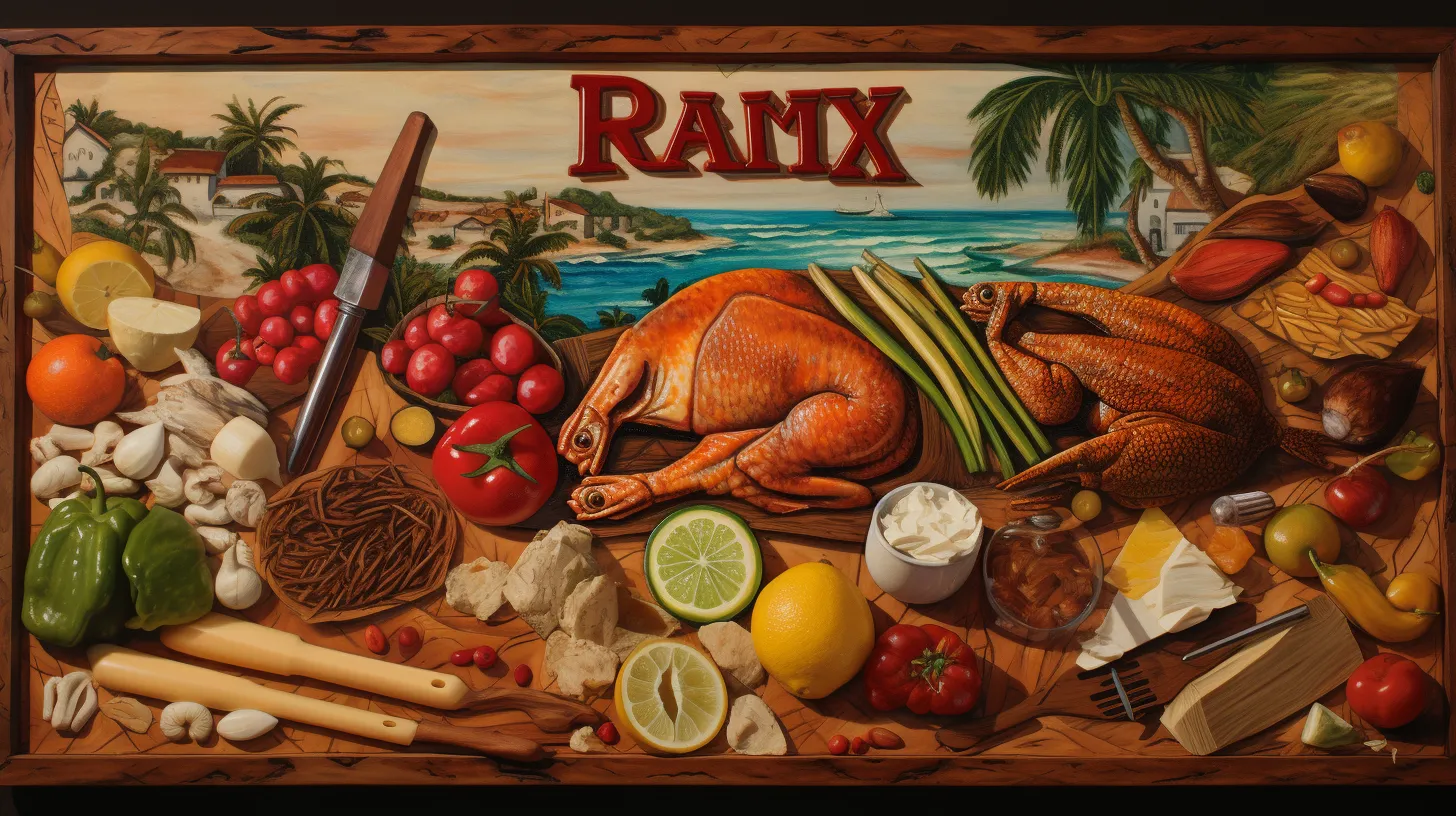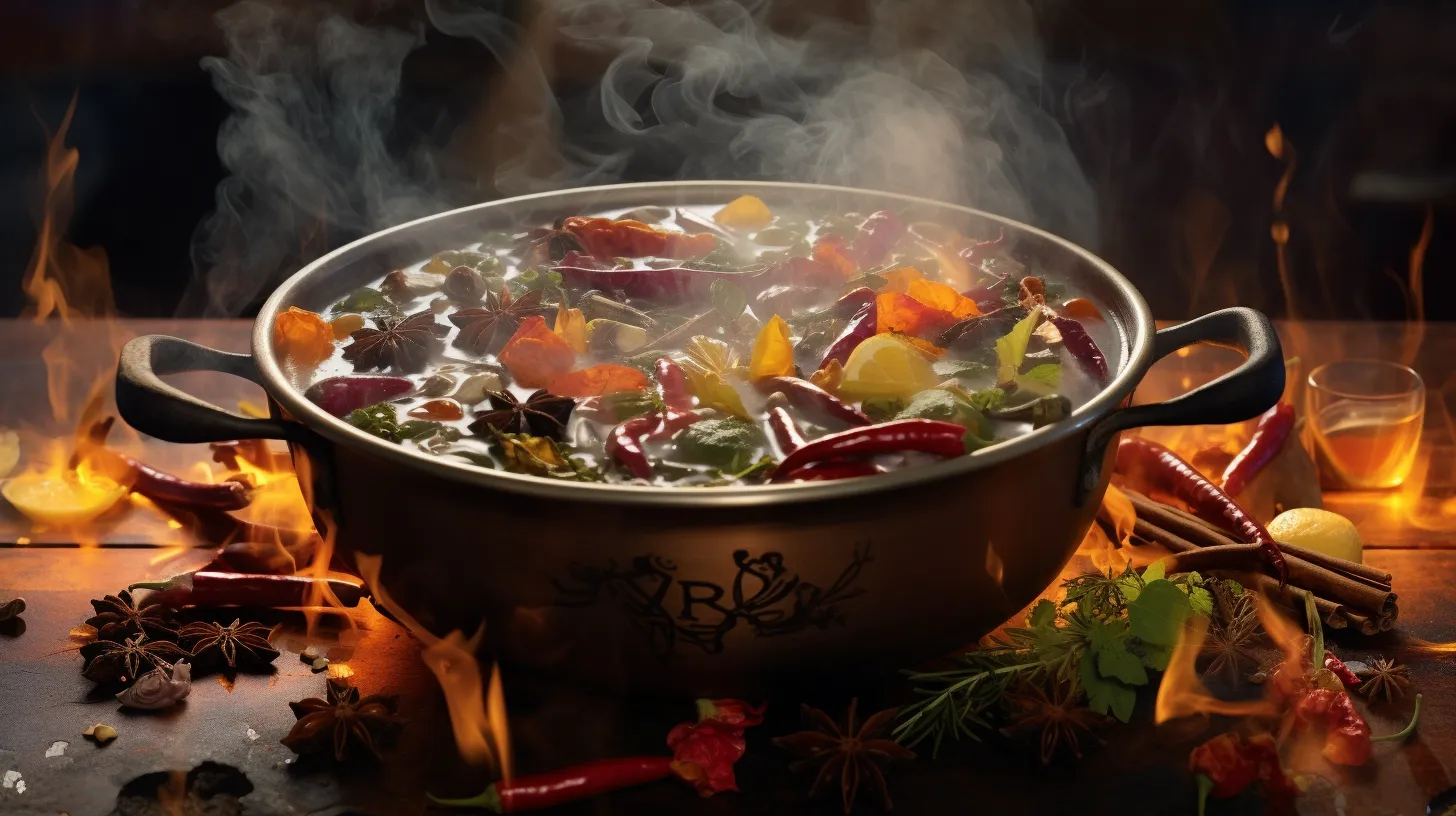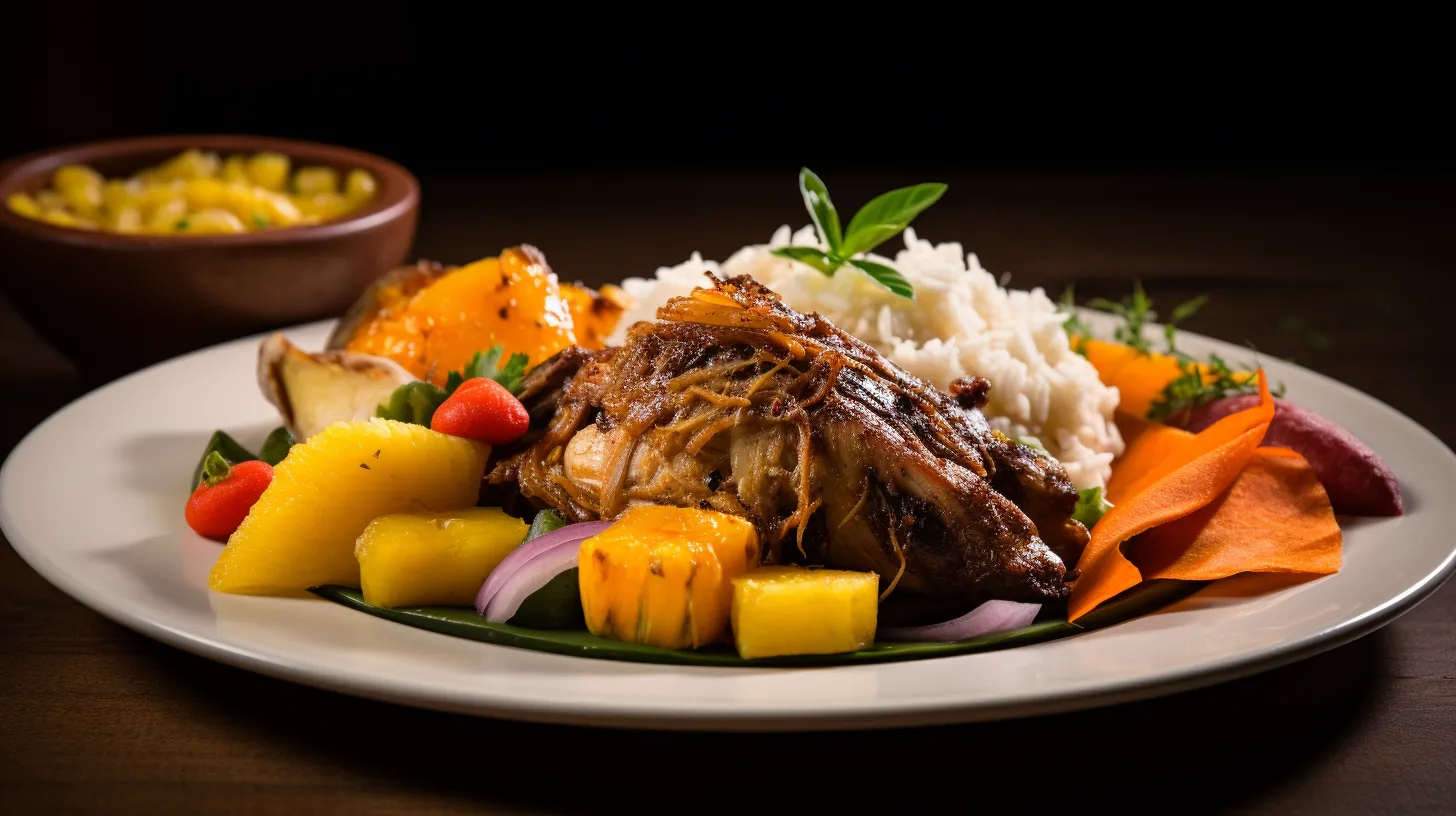Haiti’s national dish holds a special place in the hearts of locals and has gained global recognition.
Griyo, the revered national dish of Haiti, features marinated and fried pork shoulder, served with diri ak pwa wouj (red beans and rice) and pikliz (pickled cabbage and scotch bonnet peppers).
This flavorful combination reflects Haiti’s rich culinary heritage, offering a delightful fusion of tradition and flavor.
The Origins of Haiti’s National Dish

How did griyo, Haiti’s national dish, originate?
The origins of griyo can be traced back to the culinary traditions of enslaved Africans brought to Haiti during the colonial period. The dish reflects the influence of West African cooking techniques and flavors, which were adapted and combined with local ingredients to create a distinctly Haitian dish.
Griyo is made by marinating and frying pieces of pork shoulder, resulting in crispy, flavorful meat that has become a staple in Haitian cuisine. The dish is often served with diri ak pwa wouj and pikliz, showcasing the traditional accompaniments that complement the rich flavors of griyo.
Over time, griyo has become an integral part of Haitian culinary heritage, representing the resilience and creativity of the Haitian people in preserving their cultural traditions through food.
Key Ingredients in Haitian National Dish

The key ingredients in Haiti’s national dish, griyo, play a crucial role in defining its bold and flavorful profile, reflecting the diverse culinary heritage of the country.
Marinated and fried pieces of pork shoulder, infused with a mixture of citrus juices, garlic, and spices, create the foundation of this iconic dish, showcasing the fusion of cultural influences on Haitian cuisine.
Additionally, griyo is commonly served with traditional accompaniments such as diri ak (red beans and rice) and fried plantains.
Scotch bonnet peppers add a distinctive heat to the dish, while the inclusion of peanut butter contributes to its rich and complex flavor profile.
The combination of these key ingredients results in a dish that isn’t only deeply rooted in Haitian tradition but also tantalizing to the taste buds.
Traditional Preparation of Haiti’s National Dish

The traditional preparation of Haiti’s national dish showcases the meticulous blending of cultural influences in its culinary heritage.
To prepare griyo, pork pieces are marinated in Epis, a mix of Haitian herbs, vegetables, and spices, combined with citrus juices.
After marinating, the pork is fried until crispy in vegetable oil, creating a flavorful and crunchy texture.
Griyo is commonly served with pikliz, a spicy pickled vegetable relish, adding a tangy and spicy kick to the dish.
Alongside pikliz, griyo is traditionally accompanied by beans and rice or fried plantains, adding depth and variety to the meal.
This traditional preparation method reflects the diverse influences on Haitian cuisine, incorporating techniques from West Africa, European cooking, and local ingredients to create a distinctive national dish.
Cultural Significance of Haiti’s National Dish

Griyo, Haiti’s national dish, holds a significant cultural importance as it reflects the diverse culinary influences that have shaped the country’s traditional cuisine. The dish’s origins can be traced back to West Africa, brought to Haiti through the transatlantic slave trade.
Griyo is often served at family gatherings and celebrations and is considered a staple main course. Its cultural significance lies in its ability to bring people together over a shared meal, emphasizing the importance of community and togetherness in Haitian culture.
Typically, griyo is accompanied by beans and rice, creating a harmonious blend of flavors and textures. The dish symbolizes the resilience and strength of the Haitian people, embodying the country’s history and heritage through its culinary traditions.
Regional Variations of Haiti’s National Dish

Regional variations of Haiti’s national dish reflect the diverse culinary influences from different parts of the country, contributing to the richness and complexity of Haitian cuisine.
In the northern regions of Haiti, griyo, the national dish, is often prepared with a marinade of sour orange juice, garlic, and Scotch bonnet peppers, giving the pork a tangy and spicy flavor.
In contrast, in southern Haiti, griyo is marinated with lime juice, resulting in a slightly different taste profile.
Additionally, the accompanying beans and rice, known as diri ak pwa wouj, may vary in preparation, with some regions cooking the beans until they’re soft and creamy, while others prefer them firmer and served separately.
The rice is typically cooked to a golden brown, adding a delightful nutty flavor to the dish.



